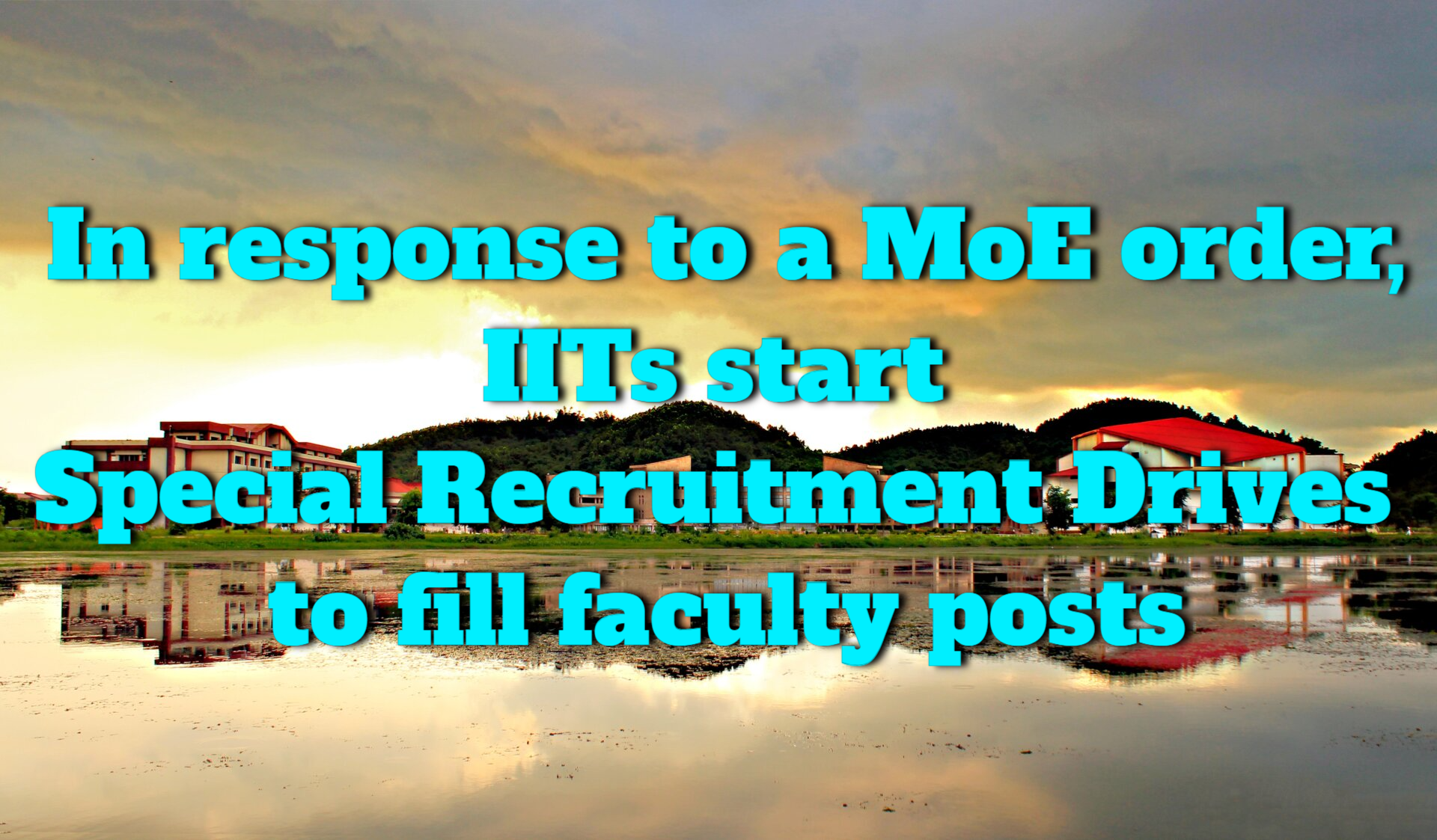Special recruitment campaigns are being planned by Indian Institutes of Technology (IITs) across the country. After the Ministry of Education authorized all government sponsored higher education institutes to fill vacant reserved posts on a mission basis, the move was made. Although the details of the effort have yet to be finalized, follow-up meetings have been scheduled. Institutes will now be required to provide a separate chapter in their annual report detailing the status of backlog vacancy filling. The Indian government mandates a 27 percent reservation in professor seats for OBC candidates, 15 percent for SC candidates, and 7.5 percent for ST candidates 2021.
Key Highlights
- Indian Institutes of Technology (IITs) are planning special recruitment campaigns to fill faculty positions reserved for socially and economically marginalized populations.
- The decision comes only weeks after the Ministry of Education (MoE) urged all government sponsored higher education institutions to fill vacant reserved posts on a mission basis.
- The Indian government mandates a 27 percent reservation in professor seats for OBC candidates, 15 percent for SC candidates, and 7.5 percent for ST candidates.
- Institutes will be required to submit a monthly report on the activities taken to fill empty jobs beginning this month, and will have to update their board of management meeting on the status of filling backlog positions.
- However, according to HT, none of the country’s 22 IITs has more than six teachers from the OBC category.
Several Indian Institutes of Technology (IITs) are planning special recruitment campaigns to fill faculty positions reserved for socially and economically marginalized populations across the country. The decision comes only weeks after the Ministry of Education (MoE) urged all government sponsored higher education institutions to fill vacant reserved posts on a mission basis.
In a letter dated August 23, the Ministry of Education directed all centrally funded higher education institutes, such as IITs, Indian Institutes of Management (IIMs), and National Institutes of Technology (NITs), to fill vacant faculty positions by September 2022, with a focus on Scheduled Castes (SC), Scheduled Tribes (ST), Other Backward Classes (OBC), and economically weaker sections (EWS). Institutes will be required to submit a monthly report on the activities taken to fill empty jobs beginning this month.
“We discussed the subject at the previous board of governors meeting,” V Ramgopal Rao, director of IIT-Delhi, said. A major recruitment campaign for faculty and postdoctoral fellowships is in the works.” The drive’s specifics have yet to be determined.
According to a top source at IIT-Bombay, the institute is planning a special recruiting drive in response to MoE orders. However, the specifics are still unknown. “We’ll have a mission mode drive soon,” says the narrator (for faculty recruitment). Wait a while,” remarked IIT-Bombay director Subhasis Chaudhuri.
IIT-Banaras Hindu University (BHU) issued a public notice for a special recruitment drive on Monday, inviting applications for positions designated for SC, ST, OBC, EWS, and disabled candidates. The search is for assistant, associate, and professorial positions. The recruitment portal is now operational. On September 1, IIT-Kharagpur issued a similar public notice.
The special recruitment efforts are in response to a letter from Amit Khare, secretary, Ministry of Education’s Department of Higher Education, sent last month. “I am writing in response to the empty faculty jobs in the central higher education institutions (CHEls) under the administrative jurisdiction of the ministry of education, particularly in the SC, ST, OBC, and EWS categories. “In order to clear this backlog, it has been agreed that all CHEls should fill these vacancies in a mission mode within a year, beginning September 5, 2021, and reporting on the action done and progress made in this regard,” he wrote in the letter.
Institutes will now be required to publish a separate chapter in their annual report illustrating the status of filling backlog vacancies in tabular style throughout the year, as instructed by the Ministry of Education. They’ll also have to put an item on the agenda of every finance committee, board of governors, and board of management meeting to update the committees and boards on the status of filling backlog positions.
The Indian government mandates a 27 percent reservation in professor seats for OBC candidates, 15 percent for SC candidates, and 7.5 percent for ST candidates. However, according to HT, none of the country’s 22 IITs has more than six teachers from the ST category, and 18 of them have fewer than ten SC applicants on their faculty records. According to HT’s earlier investigation based on RTI data, seven IITs had ten or fewer faculty members from the OBC category. Data for IIT-Mandi, one of India’s 23 IITs, was unavailable.
Among central universities and research institutes, 55% of posts are vacant…
Teaching Jobs in India: Various Faculty Positions in top Indian Institutes
“The board of governors of IIT-Bombay and Madras is well aware of the gaps in diversity with respect to reserved categories and gender,” Pawan Goenka, retired managing director and chief executive officer of Mahindra Group and chairperson of the board of governors of IIT-Bombay and Madras, had previously told HT. But we also know that it is not due to a lack of effort. While going through the recruitment procedure as per the stipulated criteria, several IITs are taking proactive initiatives to overcome these gaps. I’m sure more IITs are following suit.”
Meanwhile, IITs that are comparatively newer, such as Palakkad and Goa, have been holding special recruitment drives every year in advance of the MoE’s guidelines.





